1. Bryant M, Angell J, Tu H, Goodman M, Pattaras J, Ogan K. Health related quality of life for stone formers. J Urol. 2012; 188:436–440. PMID:
22704108.

2. Raheem OA, Khandwala YS, Sur RL, Ghani KR, Denstedt JD. Burden of Urolithiasis: trends in prevalence, treatments, and costs. Eur Urol Focus. 2017; 3:18–26. PMID:
28720363.

3. Kamel MH, Tao J, Su J, Khalil MI, Bissada NK, Schurhamer B, et al. Survival outcomes of organ sparing surgery, partial penectomy, and total penectomy in pathological T1/T2 penile cancer: report from the National Cancer Data Base. Urol Oncol. 2018; 36:82.e7–82.e15.

4. Antonelli JA, Maalouf NM, Pearle MS, Lotan Y. Use of the National Health and Nutrition Examination Survey to calculate the impact of obesity and diabetes on cost and prevalence of urolithiasis in 2030. Eur Urol. 2014; 66:724–729. PMID:
25015037.

5. Kim SH, Joung JY, Suh YS, Kim YA, Hong JH, Kuark TS, et al. Prevalence and survival prognosis of prostate cancer in patients with end-stage renal disease: a retrospective study based on the Korea national database (2003–2010). Oncotarget. 2017; 8:64250–64262. PMID:
28969067.

6. Bae SR, Seong JM, Kim LY, Paick SH, Kim HG, Lho YS, et al. The epidemiology of reno-ureteral stone disease in Koreans: a nationwide population-based study. Urolithiasis. 2014; 42:109–114. PMID:
24526235.

7. Kang HW, Seo SP, Ha YS, Kim WT, Kim YJ, Yun SJ, et al. Chronological trends in clinical and urinary metabolic features over 20 years in Korean urolithiasis patients. J Korean Med Sci. 2017; 32:1496–1501. PMID:
28776346.

8. Park J, Suh B, Lee MS, Woo SH, Shin DW. National practice pattern and time trends in treatment of upper urinary tract calculi in Korea: a nationwide population-based study. J Korean Med Sci. 2016; 31:1989–1995. PMID:
27822940.

9. Tae BS, Balpukov U, Cho SY, Jeong CW. Eleven-year cumulative incidence and estimated lifetime prevalence of urolithiasis in Korea: a National Health Insurance Service-national sample cohort based study. J Korean Med Sci. 2018; 33:e13. PMID:
29215822.

10. Modlin M. A history of urinary stone. S Afr Med J. 1980; 58:652–655. PMID:
6999641.
11. Ansari MS, Gupta NP. Impact of socioeconomic status in etiology and management of urinary stone disease. Urol Int. 2003; 70:255–261. PMID:
12776701.

12. Bartoletti R, Cai T, Mondaini N, Melone F, Travaglini F, Carini M, et al. Epidemiology and risk factors in urolithiasis. Urol Int. 2007; 79(Suppl 1):3–7. PMID:
17726345.

13. Ferrari P, Piazza R, Ghidini N, Bisi M, Galizia G, Ferrari G. Lithiasis and risk factors. Urol Int. 2007; 79(Suppl 1):8–15.

14. Trinchieri A. Epidemiological trends in urolithiasis: impact on our health care systems. Urol Res. 2006; 34:151–156. PMID:
16440192.

15. Stamatelou KK, Francis ME, Jones CA, Nyberg LM, Curhan GC. Time trends in reported prevalence of kidney stones in the United States: 1976-1994. Kidney Int. 2003; 63:1817–1823. PMID:
12675858.
16. Indridason OS, Birgisson S, Edvardsson VO, Sigvaldason H, Sigfusson N, Palsson R. Epidemiology of kidney stones in Iceland: a population-based study. Scand J Urol Nephrol. 2006; 40:215–220. PMID:
16809263.

17. Yasui T, Okada A, Hamamoto S, Hirose M, Ando R, Kubota Y, et al. The association between the incidence of urolithiasis and nutrition based on Japanese National Health and Nutrition Surveys. Urolithiasis. 2013; 41:217–224. PMID:
23632912.

18. Turney BW, Reynard JM, Noble JG, Keoghane SR. Trends in urological stone disease. BJU Int. 2012; 109:1082–1087. PMID:
21883851.

19. Knoedler JJ, Krambeck AE, Astorne W, Bergstralh E, Lieske J. Sex steroid hormone levels may not explain gender differences in development of nephrolithiasis. J Endourol. 2015; 29:1341–1345. PMID:
26422682.

20. Maalouf NM, Sato AH, Welch BJ, Howard BV, Cochrane BB, Sakhaee K, et al. Postmenopausal hormone use and the risk of nephrolithiasis: results from the women’s health initiative hormone therapy trials. Arch Intern Med. 2010; 170:1678–1685. PMID:
20937929.

21. Park HA, Park JK, Park SA, Lee JS. Age, menopause, and cardiovascular risk factors among Korean middle-aged women: the 2005 Korea National Health and Nutrition Examination Survey. J Womens Health (Larchmt). 2010; 19:869–876. PMID:
20350203.

23. Park YH, Chung SJ. A comparison of sources of sodium and potassium intake by gender, age and regions in Koreans: Korea National Health and Nutrition Examination Survey (KNHANES) 2010-2012. Korean J Community Nutr. 2016; 21:558–573.

24. Gaziev G, Asimakopoulos AD, Wadhwa K, Topazio L, Germani S, Miano R. The influence of environmental conditions on the incidence of renal colic in Rome. Urologia. 2016; 83:77–82. PMID:
27103092.

25. Park HK, Bae SR, Kim SE, Choi WS, Paick SH, Ho K, et al. The effect of climate variability on urinary stone attacks: increased incidence associated with temperature over 18℃: a population-based study. Urolithiasis. 2015; 43:89–94. PMID:
25407800.
27. Eisner BH, Sheth S, Herrick B, Pais VM Jr, Sawyer M, Miller N, et al. The effects of ambient temperature, humidity and season of year on urine composition in patients with nephrolithiasis. BJU Int. 2012; 110:E1014–E1017. PMID:
22578009.

28. Dallas KB, Conti S, Liao JC, Sofer M, Pao AC, Leppert JT, et al. Redefining the stone belt: precipitation is associated with increased risk of urinary stone disease. J Endourol. 2017; 31:1203–1210. PMID:
28830242.

29. Ryu HY, Lee YK, Park J, Son H, Cho SY. Dietary risk factors for urolithiasis in Korea: a case-control pilot study. Investig Clin Urol. 2018; 59:106–111.


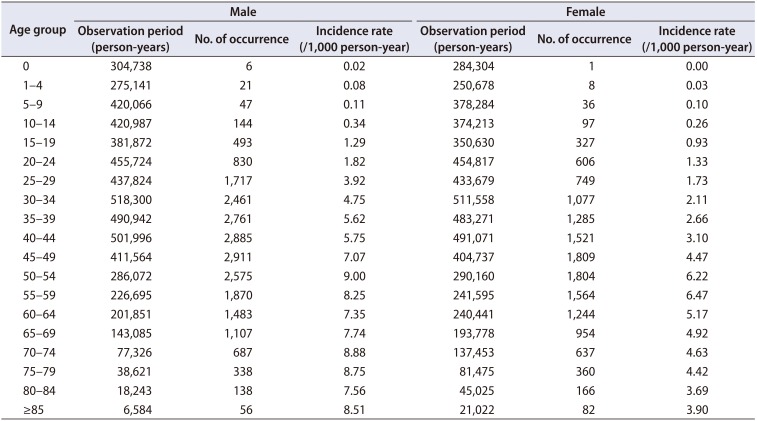




 PDF
PDF ePub
ePub Citation
Citation Print
Print



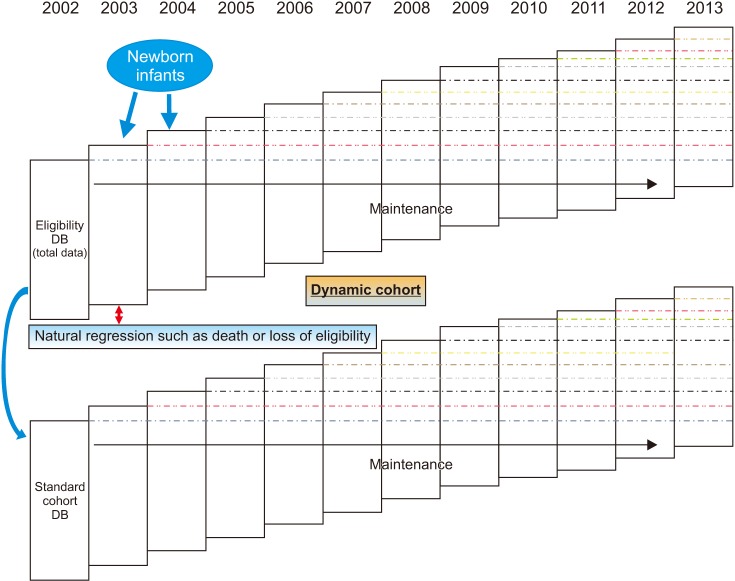






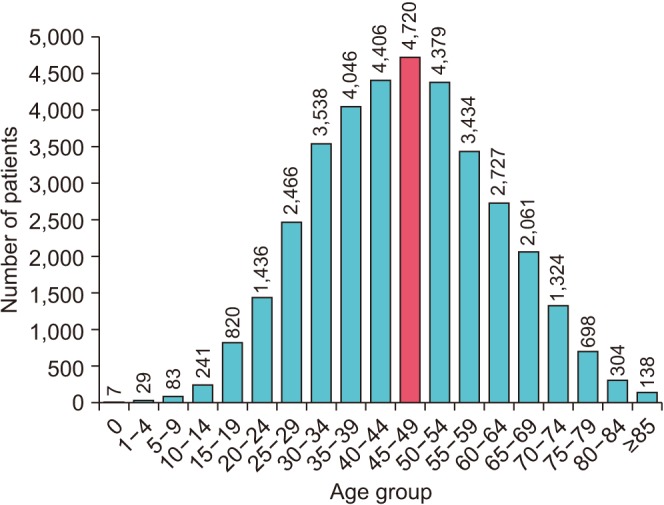
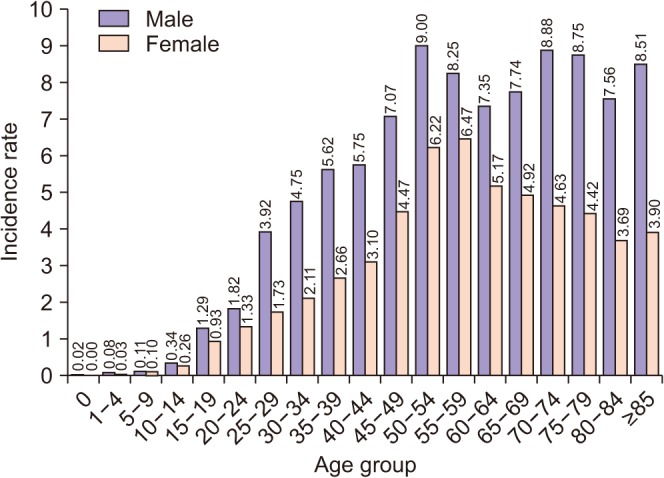
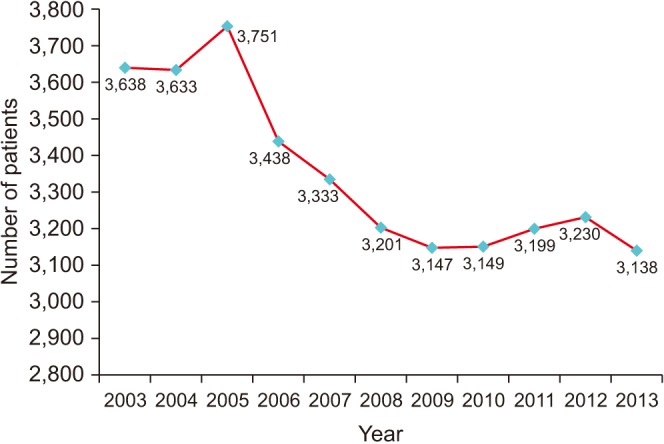
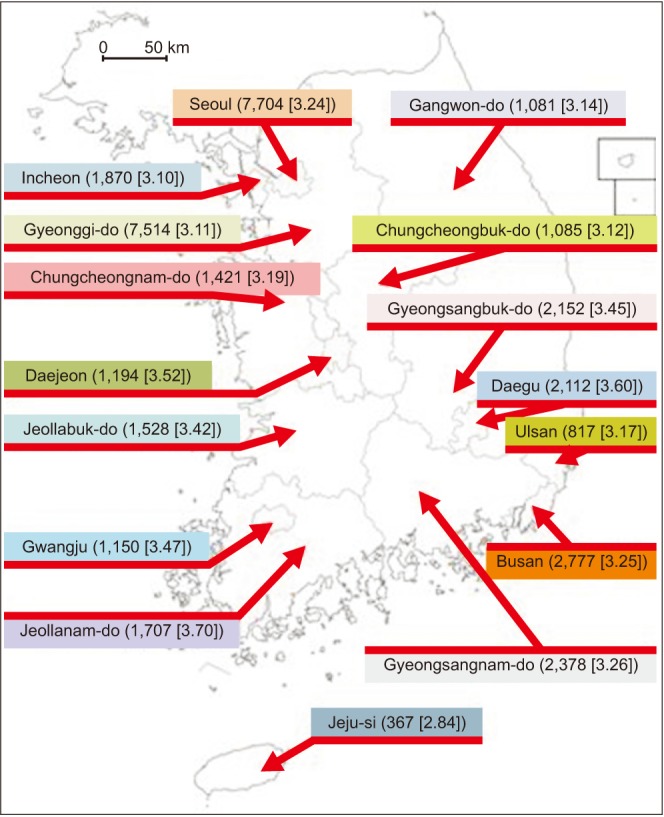
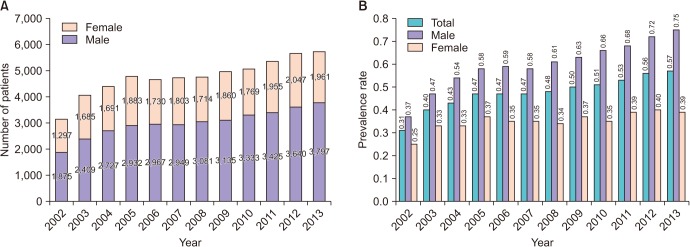
 XML Download
XML Download